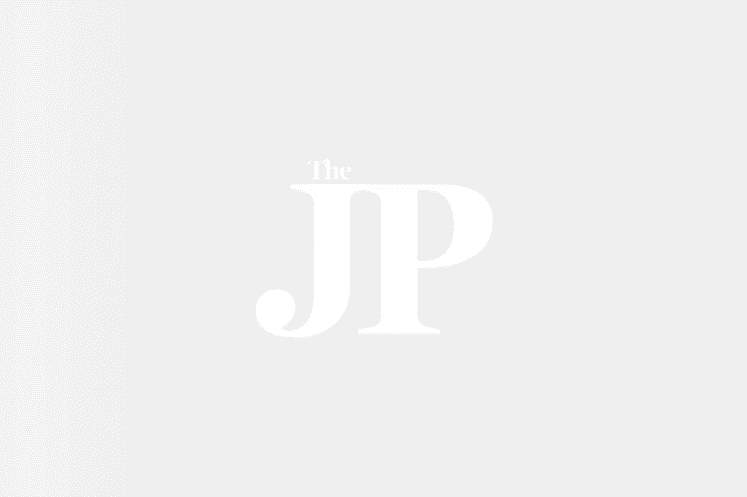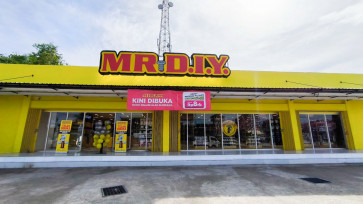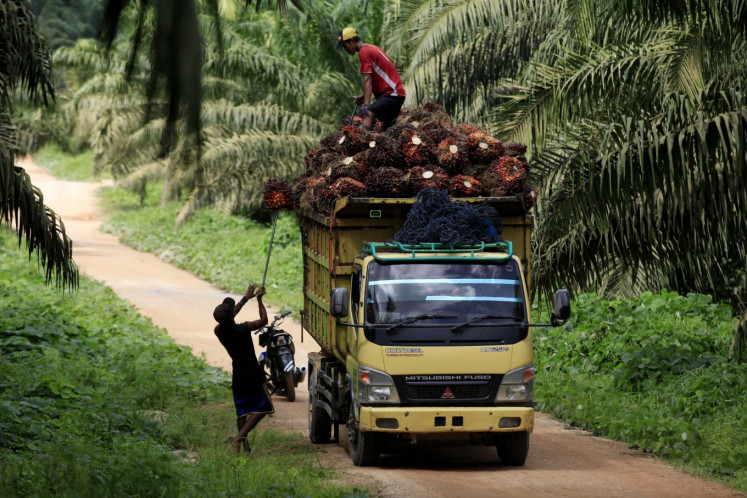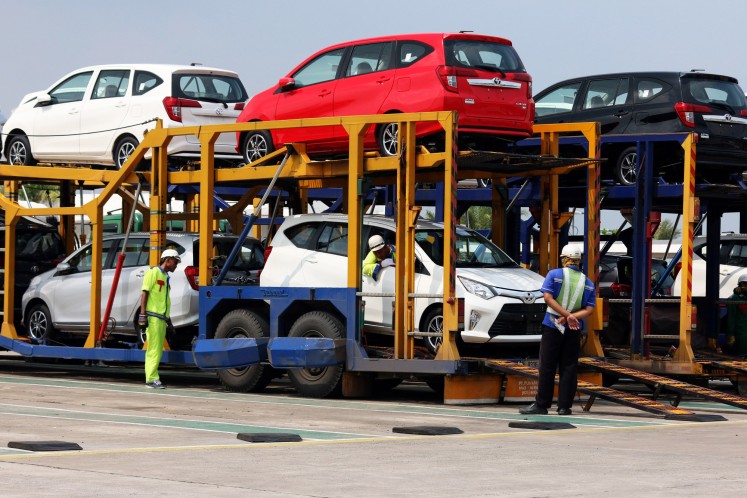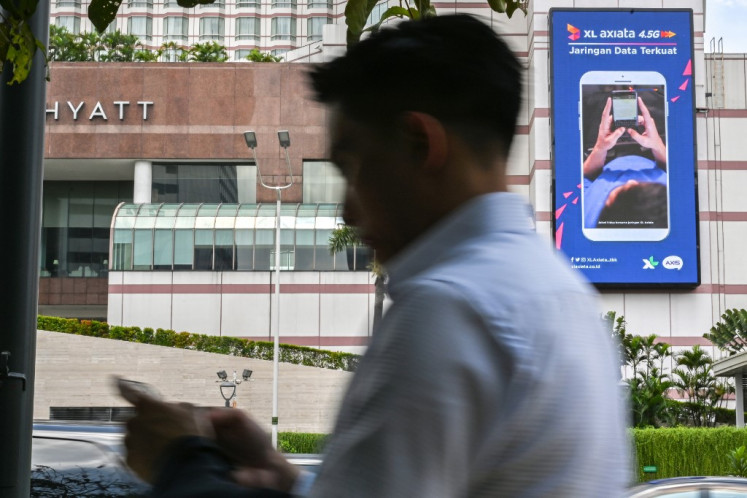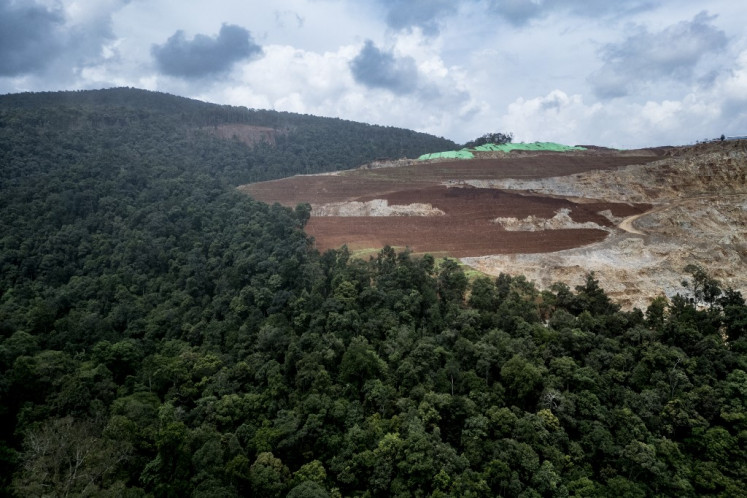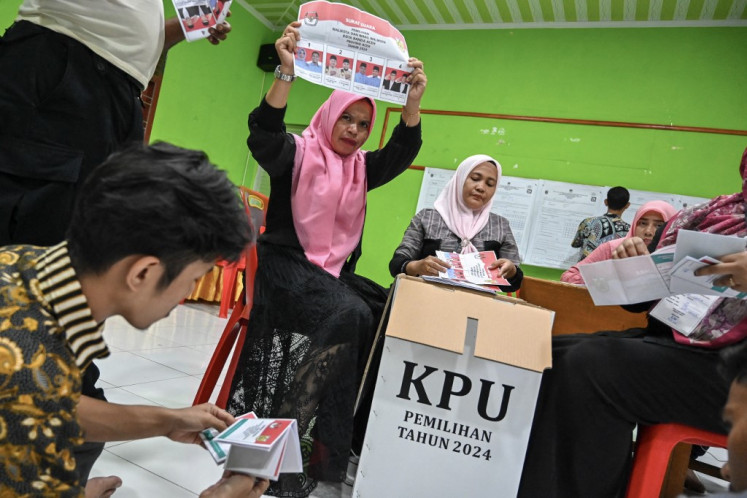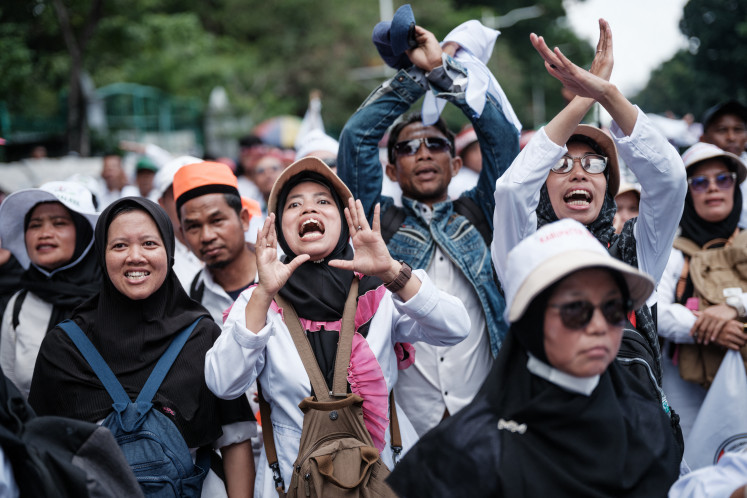Popular Reads
Top Results
Can't find what you're looking for?
View all search resultsPopular Reads
Top Results
Can't find what you're looking for?
View all search resultsMore Transjakarta feeder routes to be added
After launching on Wednesday the first three routes of a feeder service for the Transjakarta bus rapid transit (BRT) system, the Jakarta administration will launch more routes by the end of the year
Change text size
Gift Premium Articles
to Anyone
A
fter launching on Wednesday the first three routes of a feeder service for the Transjakarta bus rapid transit (BRT) system, the Jakarta administration will launch more routes by the end of the year.
City transportation head Udar Pristono said that four more routes are currently being prepared to add more coverage for the feeder network to connect Jakarta’s suburbs and commercial areas with the BRT network.
“We are currently studying the demand and later on we’ll put the project out to tender,” Pristono said.
The city is dividing the feeder service into two categories; namely, origin and destination feeders.
The origin feeder service will connect residential areas to Trans- jakarta shelters, while destination feeders will carry commuters to commercial and business districts, as well as connect Transjakarta routes with other transportation hubs, such as railway stations.
The initial three routes launched Wednesday comprise Route 1, which will cover Puri Indah Hospital, the West Jakarta Municipal Office, Pasar Puri, Mutiara Kedoya, Kedoya Raya, Kembangan, and Pesanggrahan, connecting to Transjakarta Corridor 3 (Kalideres–Harmoni) and Corridor 8 (Lebak Bulus–Harmoni).
Route 2 in Central Jakarta covers Jatibaru, Abdul Muis, Jl. Medan Merdeka Barat, and Jl. Fachruddin, connecting with Transjakarta Corridor 1 (Blok M–Kota) and Corridor 2 (Pulo Gadung–Harmoni).
Route 3 covers the Jakarta Stock Exchange, the Senayan sports complex, Plaza Senayan, and the Senayan Trade Center, connecting with Transjakarta Corridor 1 and Corridor 9 (Pinang Ranti–Pluit).
The three routes will be served by 15 buses: six buses on Route 1, four on Route 2 and five on Route 3.
Each of the feeder buses has a total capacity of 35 passengers and will only stop at designated shelters. They will operate according to the same hours as the Tranjakarta buses — from 5 a.m. to 11 p.m. — with a planned headway of 30 minutes.
The feeder service is expected to be able to carry a total of 5,250 passengers each day.
Kusmanto, the agency head for land transportation, said that the feeder service is fully funded and operated by private companies.
Passengers will pay Rp 6,500 (72 US cents) for each ticket, which covers Rp 3,000 for the feeder service and Rp 3,500 for the Transjakarta BRT.
The planned four additional feeder routes are Kelapa Gading-Jl. Yos Sudarso in North Jakarta; Muara Angke–Muara Karang in West Jakarta; Cibubur–Cililitan in East Jakarta; and Kebayoran Lama–Jl. Sudirman in South Jakarta.
Separately on Wednesday, the director of the Institute of Transportation Studies (Instran), Darmaningtyas, welcomed the feeder service, saying it was a good effort.
However, he said, the city needs to make a commitment to the continuity and maintenance of the service.
“It’s a good step, but it needs to be followed up with more,” Darmaningtyas said.
He said that quality of service of both the BRT and its feeder service need to be maintained.
“The Transjakarta management should also synchronize the headway of both services to avoid long queues and waiting times for passengers,” Darmaningtyas added.
Transjakarta has a total of 524 buses plying 10 routes. It is planning to add 180 new buses and two new routes over the next two years.

